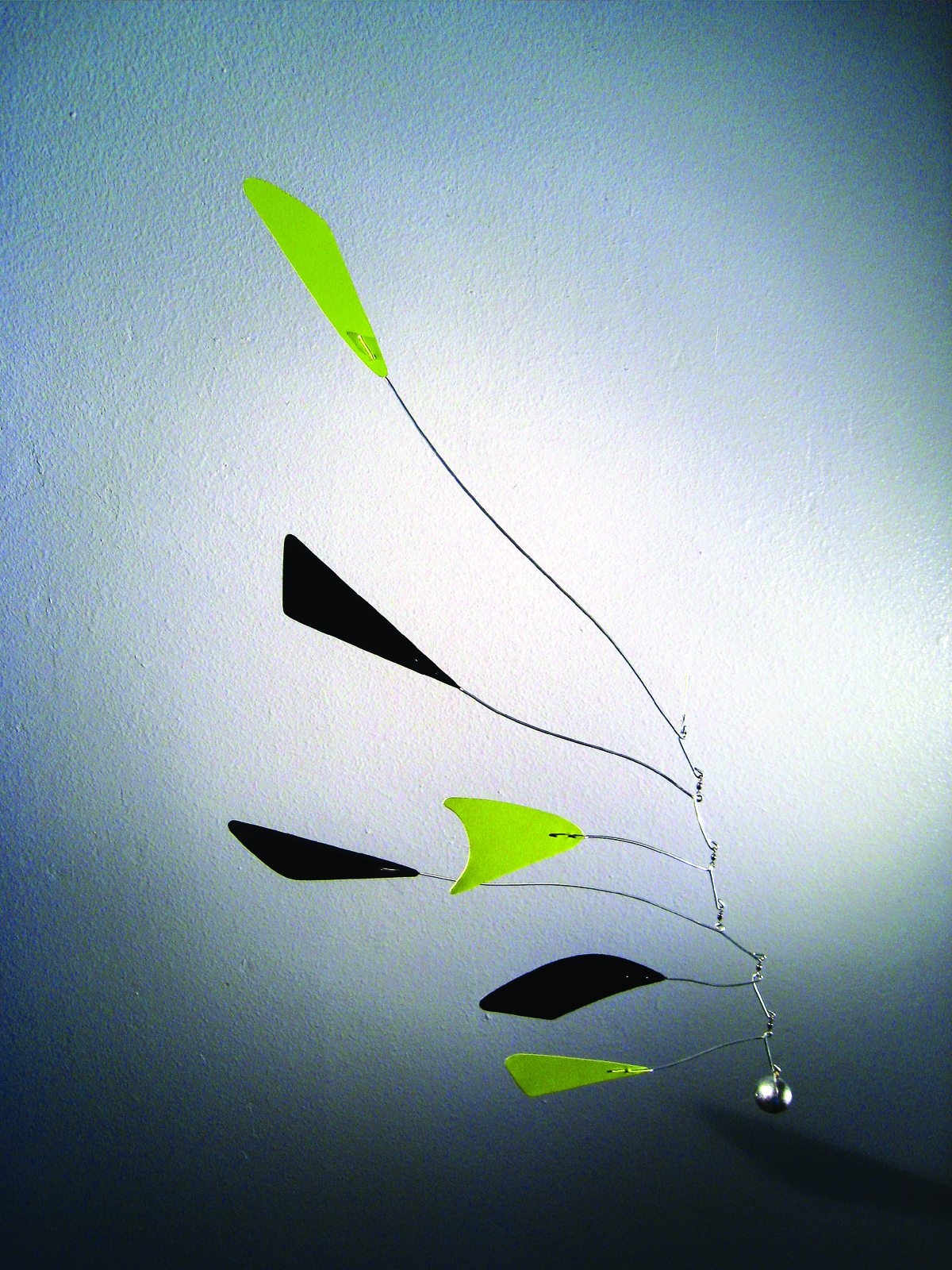
Alexander Calder, inventor of modern mobiles, constructed his classic models from wire and sheet metal. This mobile is based on Calder’s mid-century modern mobiles, yet I’d like to think it has a contemporary design element to it.
Conventional mobiles are mostly made with hook-into-loop connections, which restrict movement to some extent. My mobile uses swivels, which allow the parts to rotate full circle, independent from each other.
It also has a weight attached, which gives the balance points more flexibility and makes the mobile a little easier to build. The weight also gives the mobile more stability, making it better equipped to hang in a windy spot or outdoors.
Finished, it will measure approximately 30″ (75cm) in both height and diameter, which fits an average-sized room nicely.
Mobiles are constructed from the bottom up, meaning you start with the lowest part because the balance of the higher parts depends on the weight of the lower ones. A mobile with a weight attached like this one gives you quite a bit of flexibility on the balance points. You can increase or decrease the angle of the arms going out from the loop to point more upward or downward.




